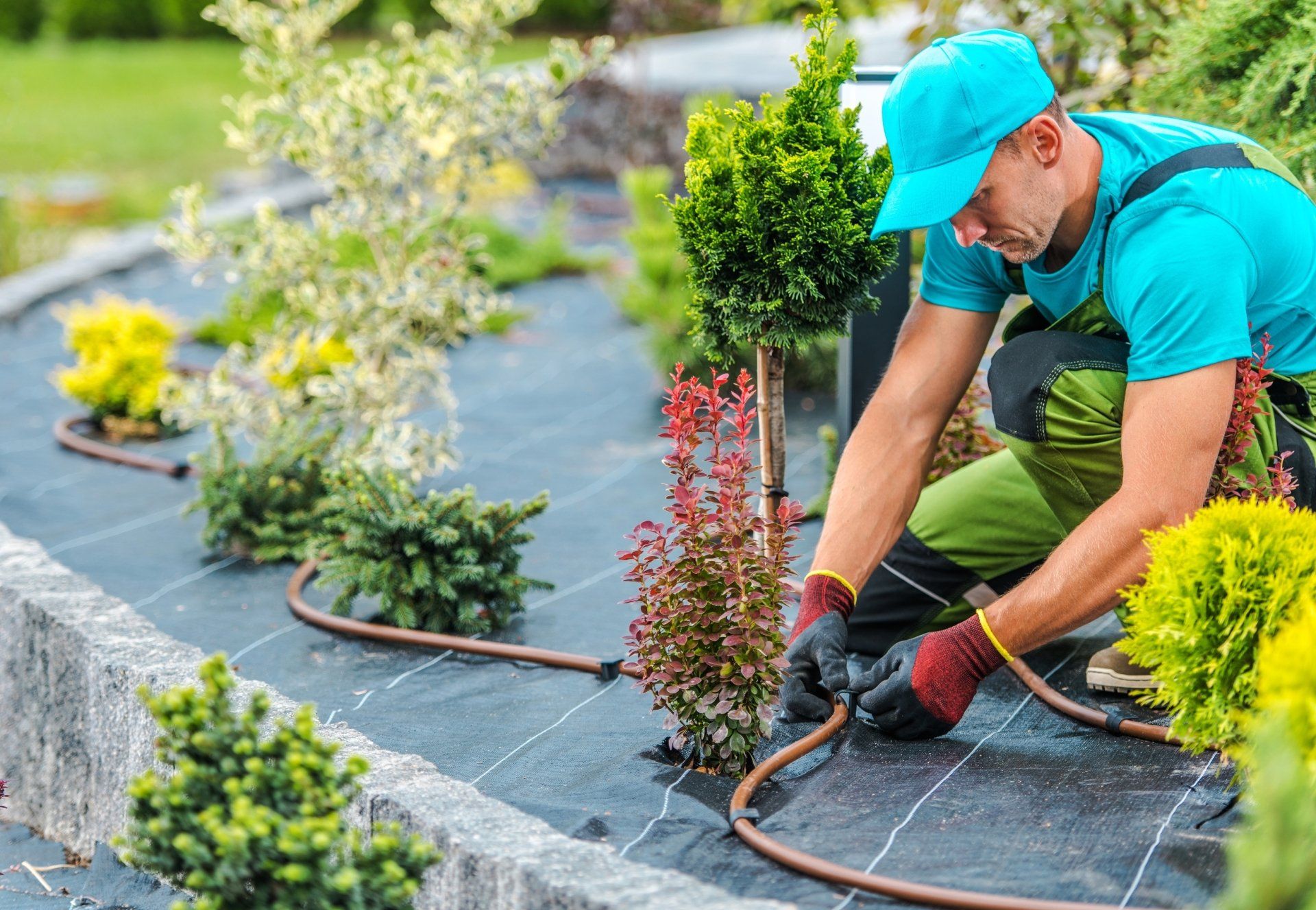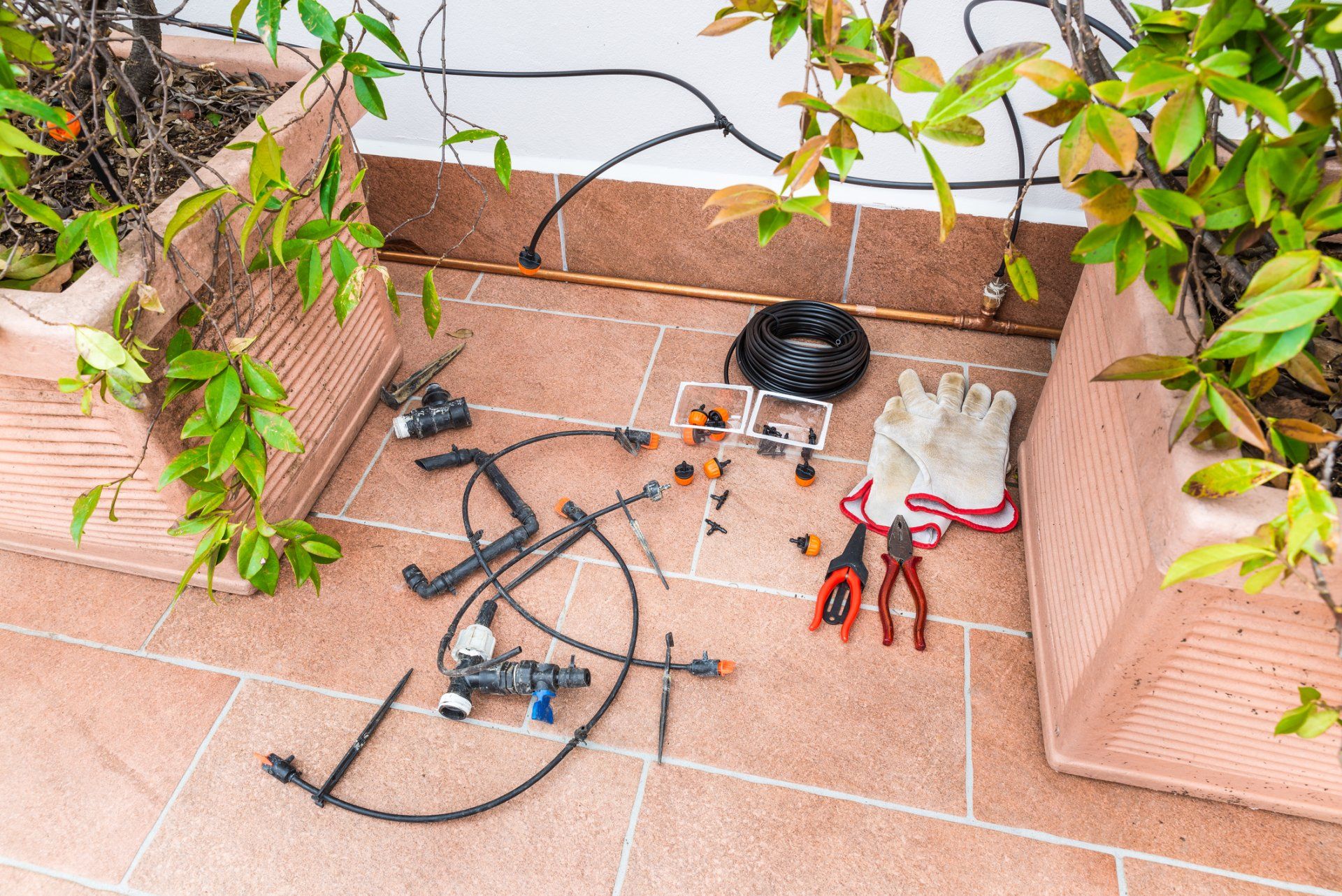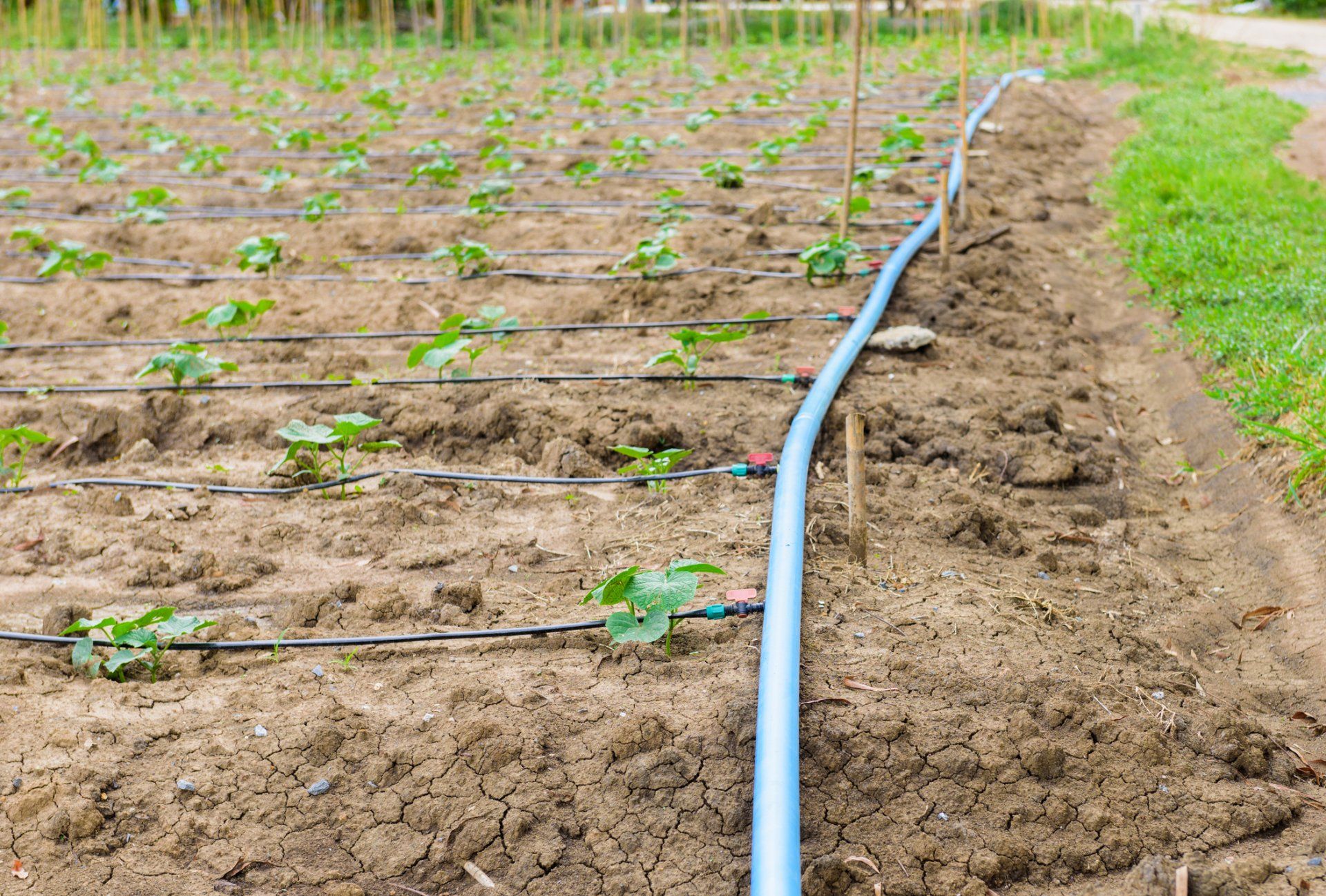Dripper Irrigation System Installation
Are you looking for an efficient and eco-friendly way to keep your garden watered? If so, then installing a drip irrigation system might be the best option for you. With Sprinkler Installation Phoenix, you can trust that our experienced team of experts are here to provide expert advice and consultation on any drip system installation project. Whether already have a complex or simple sprinkler setup or starting from scratch, we'll guide you through every step of the process – from design and layout to testing and troubleshooting – making sure that no detail is left unchecked in order for us to help create the perfect watering solution tailored specifically for your unique property. Read on to discover more about our professional irrigation systems services!
Are you tired of watering all your plants and trees by hand?
A lot like we do with our sprinkler systems we want to know what your intention is for your drip system. That way we can design in such a way that we are going to be able to guarantee that the system will be able to effectively water a particular patch of land. Which, at the end of the day, is the goal for these systems anyway. A big part of our installation process has to do with making sure that we have the right design in place to be able to get water where we need to get it.
What is a Drip System and How Can it Benefit Your Property in Phoenix, AZ
If you're a homeowner in Phoenix—whether you have a sprawling yard or just a few container plants—you may have heard about the benefits of installing an automated drip irrigation system. But what exactly is it, and how can it help your property? A drip system is a way to water your plants with precision, using a network of PVC pipes and tubes to deliver consistent, low-pressure drips of water directly to the roots of your vegetables, trees, flowers, and any other plants on your property. Not only does this save you time and energy compared to traditional watering methods, but it can also help reduce water waste and ensure that your plants get exactly the amount of moisture they need to thrive. No more over- or under-watering your vegetable garden or missing a day of watering your container plants when the temperature soars—it's all taken care of automatically with a drip system. So why not consider making this eco-friendly investment in your property?
Professional Installation Services from Sprinkler Installation Phoenix
Are you tired of your lawn not getting enough water or receiving too much? Look no further than Sprinkler Installation Phoenix for top-notch professional installation services. Their expertise in installing drip irrigation systems will ensure your lawn gets the perfect amount of water it needs. Did you know that drip irrigation is especially effective for people living in areas with clay soil or sandy soil? Sprinkler Installation Phoenix knows the importance of understanding soil types and root zones to ensure optimal flow rate and maximum efficiency of your irrigation system. Don't let uneven or insufficient watering ruin your lawn, contact Sprinkler Installation Phoenix for expert installation services today.
The Purpose of Drip Irrigation Systems
You know how when you lose your phone charger you may end up buying sort of a cheaper version of it just to have it work for a while? You know it's going to get the job done. Yet, it may fail you sooner rather than later. While the brand name charger is going to be much more durable and reliable. This is also how drip irrigation system works. It's one thing to set up a drip system to water some flowers at home. You are not going to need such a heavy-duty system. If you want a drip system for commercial agricultural purposes you are going to need something a bit on the higher end.
Designing Your Automatic Watering System
As we talked about with our lawn sprinklers system set up processes, our goal is to have the drip system adapt to your property or your needs whether you need more water or lower flow rates. There is no sense in setting up a huge drip system just to water a mini flower garden. Just like there is no sense in trying to use a miniature residential type drip system for commercial purposes. We can design a system that perfectly fits your property and your particular needs!
Commercial Use of Drip Systems
The sizes of the drip systems that we are going to be able to create are seemingly endless. One of the common themes throughout this page has been precisely that of the difference between home usage equipment and commercial grade drip systems. We've worked with equipment from some of the top brands while also utilizing some lesser brand names that, is not a major issue. Yet, most people want some form of recognizable brand name equipment. Mainly because it's easier to find replacement parts. Even if years down the road we are not collaborating on the same project.
Call For A Budget
Because of many of these things that we just mentioned, (different types of equipment, larger-scale vs smaller scale projects) it's really hard for us to throw out all sorts of numbers and let you know how much setting one of these systems up is going to cost. If you want to get a budget on a specific project that you have in mind give us a call. We can head over to your property and talk about all of the specifics that you are going to need. To be able to provide you with an accurate budget.
How do I get started with installation?
Drip systems are fairly easy to install, but you should hire a licensed professional to help. The first step is making sure the area where the drip system will be installed has proper water pressure and that it won't exceed one gallon per hour per 1/2"-diameter emitter or two gallons per hour for 3/4"-diameter emitters. Then set up the main water line from your supply source to make sure there is adequate pressure. If not, be prepared to install a regulator. Next, dig trenches for your main and supplemental lines using a T-post or shovel handle as a depth marker (usually 18–24" deep). At this stage it is probably best to use polyethylene tubing rather than black PVC because it will hold its shape better in the ground. If you are installing multiple lines with a consistent slope, it is best to use smaller diameter tubing and thinner emitters so water has less distance to travel.
After all your spacing and layout have been determined, set up a drip test on a small scale using emitter hoses, or 1/2"-diameter polyethylene tubing as your main line running parallel to each row of plants (this should be done before putting in your main lines). This simple "test bed" will teach you more about how the system works than any wall chart could ever convey. Once you've established that the flow from each emitter is correct for feeding all the plants you need to feed, and that your emitters aren't clogged by dirt or debris, then it's time to get trenching.
Once you've run all your main lines and have pointed out each emitter location on your plan (usually every 6–12"), get ready to install your emitters. Emitters are usually attached directly to the main line using a barbed connector that will grip the tubing when you screw it on. The size of this connector should be marked on the packaging with references such as 1/2"-barb × 3/4" O.D., indicating that this fitting is good for 1/2"-diameter polyethylene tubing with an outside diameter around 3/4". Usually these fittings will have a plastic washer on each side of the barbed connector. It is wise to wrap the tubing with tape before you push it through the fitting so that there's less likely to be leakage.
The next step is connecting your emitter lines to their corresponding main lines, which can be done in a number of ways depending on how you have determined your layout. First you should decide how long your line will run from its beginning at the water supply source until it connects with its corresponding rain barrel or other water collection device. Next, determine when, and if, this line should branch off into any supplemental lines to reach plant clusters or edges of beds (if possible). Mark these points on paper then measure the distance between and use a compass or other measuring device to find the angle for proper layout.
With all this information you should be able to lay out an emitter line, add supplemental lines where necessary, and connect them to their corresponding main lines using connectors that fit together like a puzzle piece. The last step is maintaining your system by keeping it free of clogs on the inlet end (some systems use filters there) and making sure water levels aren't too high or too low during watering cycles.
Otherwise instead of attempting to do all of that yourself you can call in the experts at Sprinkler Installation Phoenix to handle it all for you. We will come out and inspect the property and understand exactly what it is you are looking to do. We will come out at a time that best fits your schedule and handle any hard labor needed for the installation of you garden irrigation system. Give us a call or fill our the form to set up an appointment with one of our representatives today!
What is a drip irrigation system?
Drip systems are often used as a low-cost method of watering plants, trees and shrubs. They use less water than overhead sprinkler systems because the water is dripped directly on the roots. Drip irrigation may not be suitable for all plants or all soils, but there are many benefits in its proper application. Drip irrigation has been used in agriculture for many years. It can be used to control plant moisture, eliminate disease and reduce weed growth. It may also help reduce erosion and leaching of top soil by directing water directly to the root zone where it is needed most. Basically a drip irrigation is a system of overhead- or surface-level emitters that delivers water directly to the root zone. It's an environmentally friendly and efficient method for watering lawns, shrubs, trees and vegetable gardens.
What are the benefits of drip irrigation?
Drip irrigation can reduce plant stress with even, localized moisture. Plants can use water more efficiently and may be able to withstand drier conditions than before. Drip systems may take longer to affect plants but there is less water loss to evaporation, wind or run-off. Since water is applied directly to the root zone where it is needed rather than sprayed on leaves for transpiration, leaf diseases that thrive in wet environments are often eliminated. It's an environmentally responsible method of watering plants because it uses less water than other methods and delivers the most needed nutrients when they are available from fertilizers used as part of the system design. There is also no runoff or erosive action due to over watering, since water is applied directly to the soil at a slow rate.
How does a drip irrigation system work?
Drip systems are comprised of three main parts: 1) Water source; 2) A filter or screen to remove large debris; 3) Drip lines with emitters that provide the water supply to individual plants. The incoming water is filtered before it enters the hose attachment on top of each emitter tube. The clean water flows through the pipe and either drips onto a cluster of roots encouraged to grow along that line, or exits the end of the line and runs out onto the soil where it helps prevent erosion. Drip systems may also need a pressure regulator to control water pressure in the system. Water emitters may be attached at various lengths along the drip line depending on your design and chosen plants. The number of emitters needed depends upon the type of plant, its root depth and how much water is being applied.
Why should you install a drip system?
Like most things, drip systems require some planning and should be installed with the help of a professional. A good design is more likely to succeed if it takes into consideration the available water pressure, soil type, plant growth patterns and layout. Once you have decided that a drip system is right for your environment, there are many benefits including: higher yields on plants because less water is needed, less water lost from evaporation due to even water distribution right at the roots, and reduced runoff from landscaped areas to name a few.


